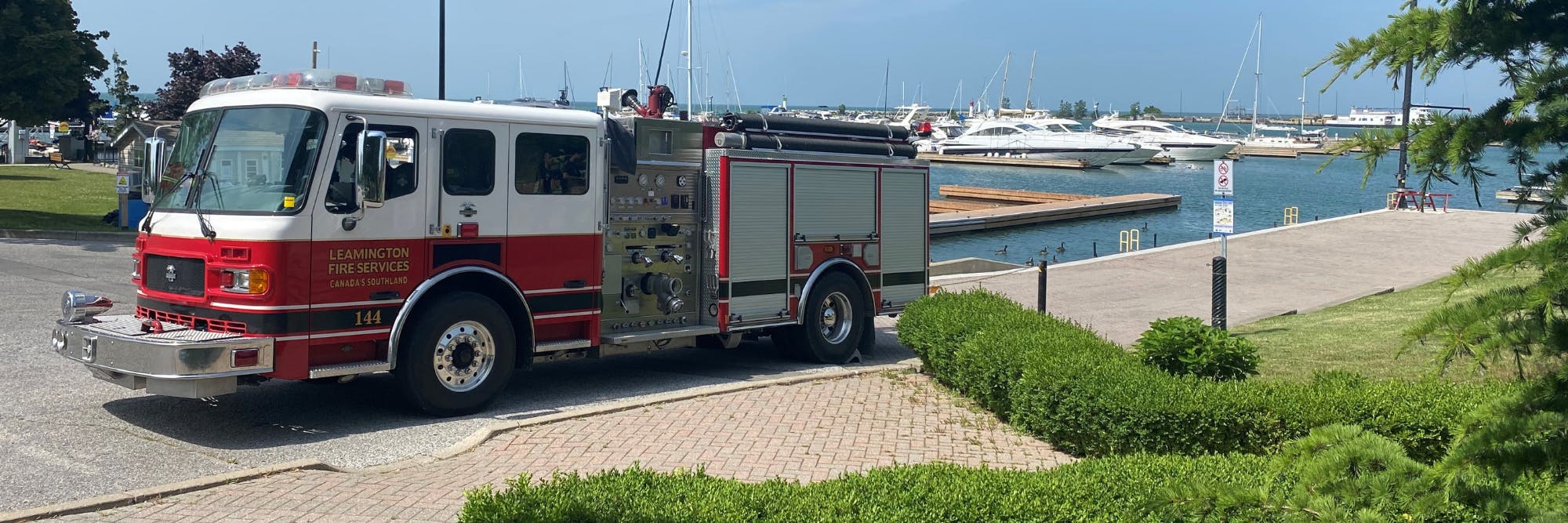Leamington Fire Services
Leamington Fire Services provides a full range of services to the residents of Leamington including but not limited to, public education, fire prevention and emergency fire and rescue services.
The department responds to an area of 238 square kilometres and consists of 34 members; 6 full-time and 28 classified part-time firefighters. The department operates from a single station, which is located at 5 Clark Street West, Leamington and houses a Heavy Duty Rescue Command Unit, 95' Tower Platform, 75' Ladder, Engine and two Tankers. The department also operates three 4-wheel drive Chiefs' Units, two Fire Prevention vehicles and during the boating season May to October, a 21' Sea Swirl Rescue Boat which is stationed at the Leamington Marina.
Here are some key fire safety tips:
- Install CO alarms outside all sleeping areas if your home has a fuel-burning appliance, fireplace or attached garage.
- Test smoke and CO alarms monthly by pressing the test button. Change the batteries spring and fall.
- Smoke and CO alarms wear out over time. Replace alarms according to the manufacturer’s recommendations or if they are more than 10 years old.
- Exposure to CO can cause flu-like symptoms such as headaches, nausea, dizziness, as well as confusion, drowsiness, loss of consciousness and death.
- If your CO alarm sounds, and you or other occupants suffer from symptoms of CO poisoning, get everyone out of the home immediately. Then call 9-1-1 or your local emergency services number from outside the building.
- If your CO alarm sounds and no one is suffering from symptoms of CO poisoning, check to see if the battery needs replacing, or if the alarm has reached its "end-of-life" before calling 9-1-1.
- Your CO alarm sounds different than your smoke alarm. Test both alarms monthly and make sure everyone in your home knows the difference between the two alarm sounds.
- Don’t be confused by the sound of your CO alarm’s low-battery warning. Follow your CO alarm manufacturer’s instructions so you know the difference between the low-battery warning, the “end-of-life” warning, and the alarm alerting you to the presence of CO in your home.
Resources
For more information and links to valuable tools visit the Office of the Fire Marshall and Emergency Management’s website and COsafety.ca.
Check out our FAQ section for answers to some of our most asked questions. If you have any other fire services-related questions, please feel free to ask them below.






